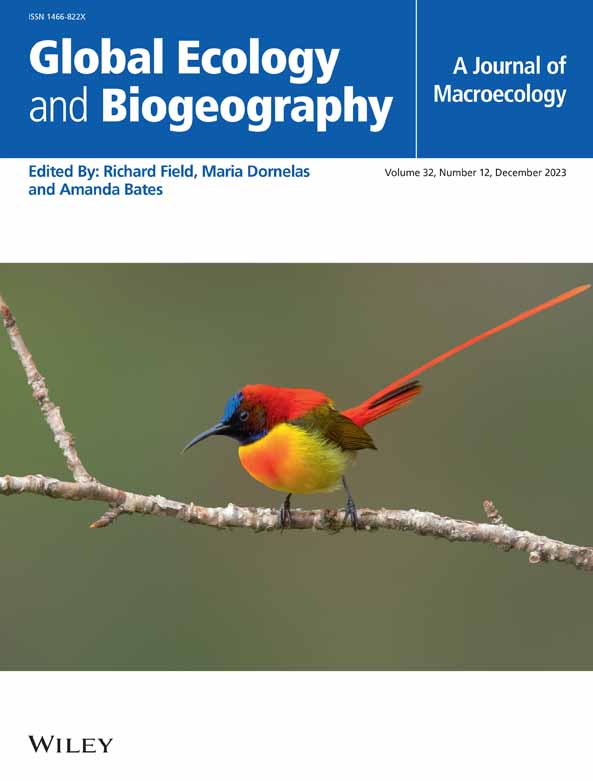Phosphorus Limitation Constrains Global Forest Productivity Directly and Indirectly via Forest Community Structural Attributes: Meta-Analysis
Abstract
Aim
To investigate the direct effects of phosphorus (P) fertilisation on key tree photosynthetic traits and productivity, as well as its indirect effects mediated through forest community structure (tree size, species richness, and abundance).
Location
Worldwide.
Time Period
1990–2024.
Major Taxa Studied
Trees.
Methods
We conducted a meta-analysis of 906 paired (control vs. treatment) P-fertilisation experiments and employed structural equation modelling to examine the impacts of P on seven whole-plant traits: aboveground biomass productivity (ABP), leaf chlorophyll content (Chl), leaf surface area (LSA), net carbon assimilation rate (NCA), belowground biomass productivity (BBP), specific root length (SRL), and root average diameter (RAD).
Results
Our meta-analysis revealed that P-fertilisation increased ABP by 56%, LSA by 11%, Chl by 31%, NCA by 24%, BBP by 17%, and SRL by 26%, while RAD decreased by 8%. These effects were stronger in late successional stages compared to early stages for all traits. The effect of P on productivity decreases with latitude and is stronger in the tropics, while studies on other traits remain very limited towards the poles. P (through duration and P dose rate) influenced most traits indirectly by shaping community structure, particularly tree ontogenetic variations, and interacting with precipitation, temperature, and other experimental factors.
Main Conclusions
Phosphorus fertilisation enhances tree traits related to photosynthesis and productivity, with the stronger effects observed in late successional stages and tropical regions. Its indirect influence is through shaping community structure and interacting with climate and experimental factors, providing global evidence of P-limitation that constrains current and future forest functioning and productivity.


 求助内容:
求助内容: 应助结果提醒方式:
应助结果提醒方式:


